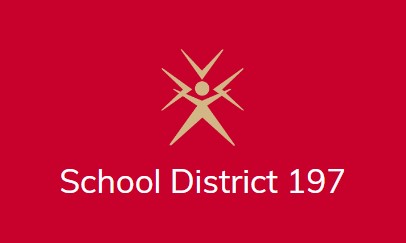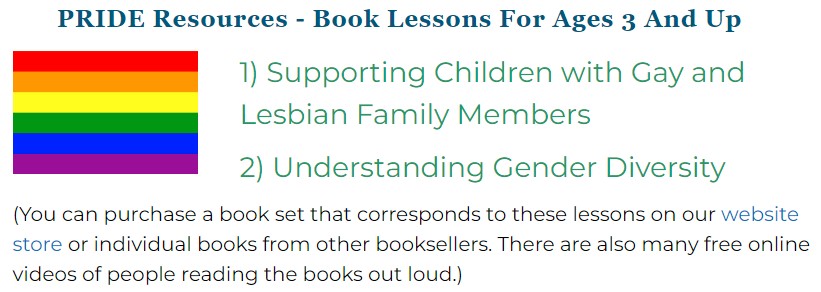
School District 197 implements new curriculum that discusses gender identity and transgender issues with elementary students
Incidents
On June 7, 2022, Alpha News reported that School District 197 in Minnesota “is adding an ‘anti-bias’ curriculum to its pre-K through fourth-grade classes.” The lessons in this curriculum will feature material on the topics of “gender identity and expression.” The news outlet further reported that “during a May 16 school board meeting, Director of Curriculum Cari Jo Drewitz gave a presentation on what teachers and students can expect from the curriculum.” The presentation delivered at the meeting is posted on the school district’s website and provides the following statement regarding the new direction of the school district’s curriculum:
Based on the feedback from staff, our strategic framework and the recommendations of our equity audit, to systematically include conversations about race, racism, equity, inequity, etc in the curriculum starting in elementary school, we have decided to begin implementing the AMAZEworks resources in our PreK through 4th grade classrooms.
The curriculum is part of a partnership with the organization “AMAZEworks.” The presentation is titled “AMAZEworks Anti-Bias Curriculum Implementation.” The presentation appears to make the argument that teachers should focus on the identities of students in lessons. Identities listed as examples include “race/ethnicity,” “religion/faith,” “gender,” “gender identity,” and “sexual orientation.” The presentation then provides another list of identity examples that includes “ability/neurodiversity,” “American Indian,” “Diverse Family Structures,” “Gender Diversity,” and “Racial Identity/Racism.”
The presentation additionally provides books on “gender identity and expression” to read to children in kindergarten, second grade, and fourth grade. The book presented for kindergarten students is titled Jacob’s New Dress. The book is about a young boy who wants to wear a dress to school. Some of the following questions are then provided to the kindergarten students for a discussion:
- Some people reacted pretty strongly when Jacob was wearing a dress. (Christopher told him he should wear something different; the teacher thought maybe he should pretend to be something different; his mom was quiet, and his dad said, “Well, it’s not what I would wear.”) Why do you think they reacted in these ways?
- Has anyone ever told you that you shouldn’t play something or wear something because of something about you, like being a boy or girl or how you look or sound? How did that feel? How did you respond?
- Some people helped Jacob when he was told he shouldn’t wear a dress. Who helped Jacob? (Emily, his mom, and Jacob himself) How did they help?
The book presented for second grade students is titled When Aidan Became a Brother. The book is about a young girl who transitions to being a boy and the child’s parents having another baby. Some of the following questions are then provided to the second grade students for a discussion:
- How did Aidan and his parents know he was really a boy? What did Aidan’s parents do after they realized this?
- What preparations did Aidan and his parents make in order to make sure they didn’t misgender the baby and they could grow up to be whoever they are?
- How does Aidan advocate for himself and his identity? How do Aidan’s parents do this, too?
The book presented for fourth grade students is titled It Feels Good to Be Yourself. The book teaches children that “gender is personal” and that they can choose their own gender different from their birth. Some of the following questions are then provided to the fourth grade students for a discussion:
- What does it mean to be cisgender? Transgender? Non-binary? Both a boy and a girl? Neither a boy nor a girl?
- Have there been times when people confused your racial or ethnic identity (or perhaps another part of your identity like ability or age) for another? How did you feel when that happened? How do you think people who are not cisgender feel when others call them by the incorrect gender pronoun?
- How might someone feel when they realize the adults guessed their gender wrong as a baby?
- What’s a respectful way to ask another person about their gender pronouns? What if you or someone else makes a mistake in identifying your or someone else’s gender and accidentally uses incorrect pronouns. What can you do?
The presentation explains that there will be a “three year opt-in implementation as a Training Academy course” for teachers during the 2022-2023, 2023-2024, and 2024-2025 school years. Teachers will be paid a “$700 stipend” to complete the training course and an additional $700 for completing an “Action Research project.” The teachers who participate in this training will “receive the curriculum materials for their classroom.” Teachers who choose not to opt in will still “receive the materials and training will happen during the school day during the 2024-2025 school year.”
Alpha News also provided a statement from the school district’s spokesperson explaining that “School District 197 has partnered with AMAZEworks.” The spokesperson reportedly provided the following statement:
School District 197 has partnered with AMAZEworks to implement an anti-bias curriculum to align with the district’s strategic framework. AMAZEworks’s programs combine children’s literature and skill-building exercises to increase a sense of belonging for all students and spark age-appropriate discussions about difference.
AMAZEworks is an organization known for promoting “PRIDE resources” to children as young as toddlers on its website. In a document titled “Understanding Gender Diversity,” the organization provides caregivers with lessons to help “guide conversations with children on gender diversity, including gender identity and expression.” The lessons include books like My Princess Boy and When Aidan Became a Brother. AMAZEworks describes My Princess Boy as a story “about a little boy who loves the color pink, sparkly things, and being a princess.” The organization describes When Aidan Became a Brother as about a girl who transitioned to being a boy. Both books are aimed at children as young as 4 years old.

Stay Informed
